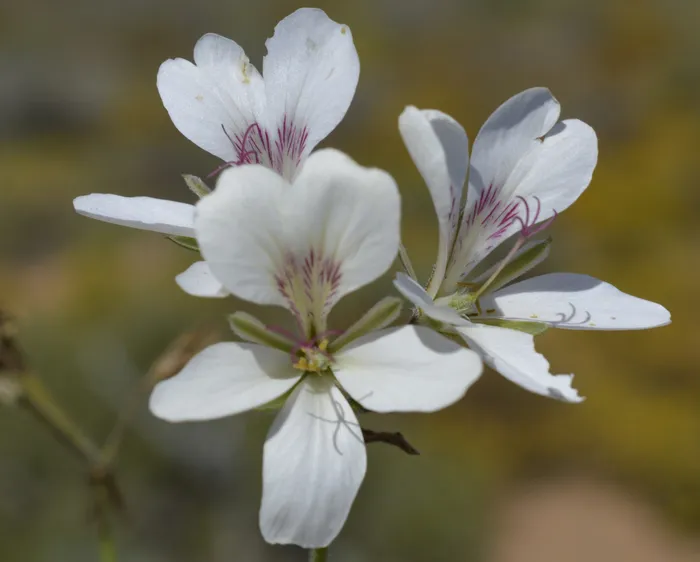New species of pelargonium discovered in NC

A new species of pelargonium has been discovered in the Richtersveld. Picture: Supplied
IN A STUNNING botanical discovery, a new species of pelargonium, commonly known as geraniums, has been unearthed in the rugged landscape of the Richtersveld.
The discovery was made by Pieter van Wyk, the curator of the |Ai-|Ais/Richtersveld Transfrontier Park Desert Botanical Garden and Nursery.
The find promises to expand our understanding of this diverse genus and has already sparked interest among horticulturists and nature enthusiasts alike.
Pelargoniums, a genus encompassing about 280 species of perennials, succulents and shrubs, are widely recognised for their vibrant blooms and aromatic foliage. While they are commonly referred to as geraniums, it's important to note that the geranium is a separate genus of related plants, also known as cranesbills, although both genera belong to the family Geraniaceae.
New Pelargonium Species Discovered at Richtersveld: https://t.co/G4QbYC5rvv pic.twitter.com/8M3XW62CsP
— SANParks (@SANParks) November 9, 2023
The separation of these two genera, Pelargonium and Geranium, was initially made by Charles Louis Héritier de Brutelle in 1789 after Carl Linnaeus had originally grouped them together under the name Geranium.
The newly discovered pelargonium is unlike any previously identified species in the Richtersveld region. Van Wyk, who stumbled upon this remarkable find, describes its distinctive features: “The flowers are giant, the largest in the genus I have ever seen in the Richtersveld region.”
This newfound species, with a growth habit reminiscent of tenicule, grows in the deep red dune sands approximately 30 kilometres south of Alexander Bay.
Unlike some pelargoniums, this one does not form tubers, making it an intriguing variation within the genus.
Pelargoniums, which are known for their resilience in warm temperate and tropical regions, are drought- and heat-tolerant, though they cannot withstand severe frosts. Many of these plants have become popular garden and houseplants, gracing temperate regions with their long-lasting blooms, which predominantly appear in red, orange, or white hues.
The world of pelargoniums boasts a rich history of breeding, leading to a vast array of cultivars distinguished by their diverse sizes, flower colours, leaf forms and aromatic foliage.
The newly discovered species introduces a fresh perspective on the diversity of pelargoniums and may eventually become a focal point for horticultural enthusiasts.
To ensure the preservation of this remarkable species, Van Wyk has collected cuttings for ex situ conservation purposes. These cuttings will be carefully cultivated at the |Ai-|Ais/Richtersveld Transfrontier Park Nursery, offering an opportunity to study and appreciate this botanical marvel for years to come.
The discovery of this unique pelargonium species not only enhances our understanding of the Richtersveld's rich botanical diversity but also underscores the importance of continued research and conservation efforts in this extraordinary natural habitat.
As horticulturists and nature lovers alike await further discoveries, one thing is certain: the Richtersveld region holds many more secrets waiting to be unearthed.